After an incredibly successful first edition of ‘Forever is Now’ at the Pyramids, which is said to have attracted 500,000 visitors, Art D’Égypte has returned to the Giza Plateau with installations by 12 artists. With the backdrop of the Pyramids of Giza, the 12 artists hailing from 11 countries around the world have created sculptures and installations that speak about the intrinsic link of the past and the present and interpret the title of the show, Forever is Now.
Nadine Abdel Ghaffar, the founder of Art D’Égypte described the ethos behind the exhibition as an effort “to revitalize the glory of ancient civilizations with public contemporary art, merging the old and the new, the past and the future through artworks presented by international and regional artists.” While the artists all produced very different pieces of work, Ghaffar described how common themes emerged in Forever is Now surrounding the notions of “time, eternity, land, history, the environment, and humanity.” Ghaffar also described how “Their artworks, made from a combination of natural and industrial materials, are in dialogue with Giza’s 4600-year-old iconic monuments of natural stone, pointing to our past and present conditions and the connections between man and technology, nature and inheritance.”
The exhibition, which has been organized in close collaboration with UNESCO and the Ministry of Tourism and Antiquities, is open to the public for a month until Nov. 30 and is accessed through the Pyramids of Giza at no additional cost. However, for those without a car, there are regular buses to get to and from each of the installations.
Dreams in Giza by Pascale Marthine Tayou
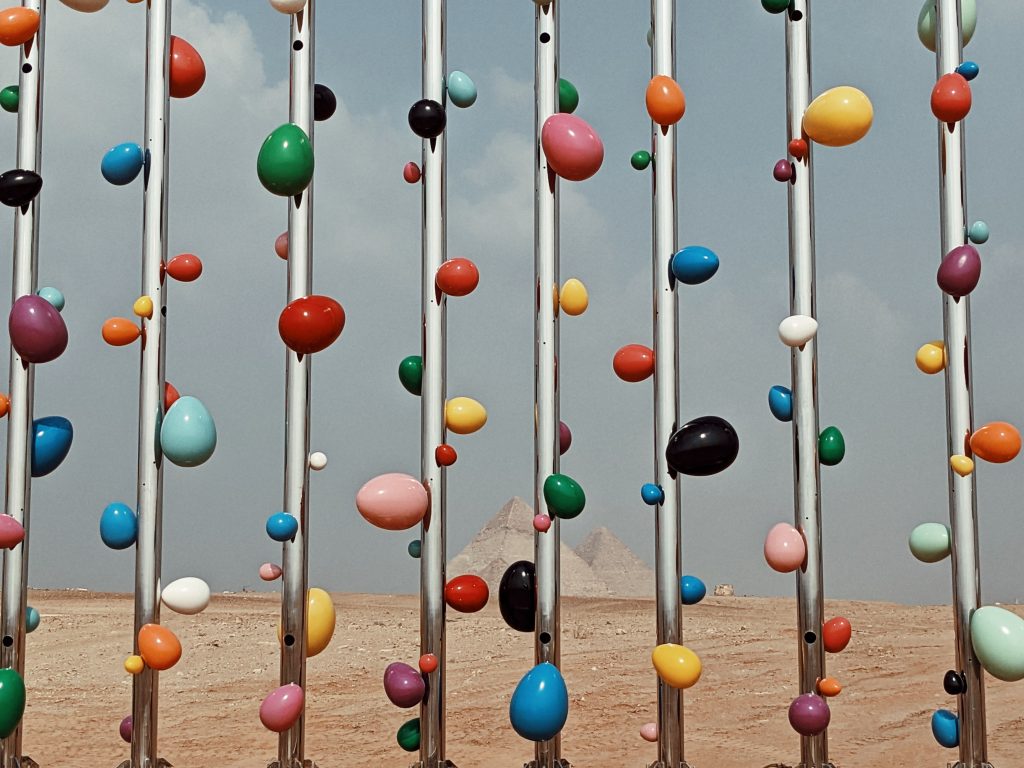
Pascale Marthine Tayou is a Cameroonian artist whose installation Dreams in Giza discusses the cosmic egg as described in Egyptian mythology. The twenty steel tubes are punched with holes to represent Egyptian flutes and whistles as the wind blows through the Giza Plateau. Attached to the flutes emerging out of the sand are colored wooden eggs that are meant to represent rebirth, referencing both Egyptian mythology and themes developed in Tayou’s work.
Pantheon of Deities by Therese Antoine

Therese Antoine is an Egyptian artist whose work focuses on the abstraction of the human form. Relating her interest in the human form to the Pyramids of Giza for Forever is Now, Antoine’s installation organizes five pillars to resemble a sundial as a way of positioning human presence at the historical site.
Inside Out Giza by JR

Like the Pyramids of Giza themselves that stand as monuments to particular individuals, the artist JR has created a stand to display the images of people from an adjacent photo booth so you can have your own monument, however briefly. Inside the pyramid-shaped photo booth, exhibition goers will receive a large printout of their photograph that is then posted on the billboards outside.
Spirit of Hathor by Natalie Clark
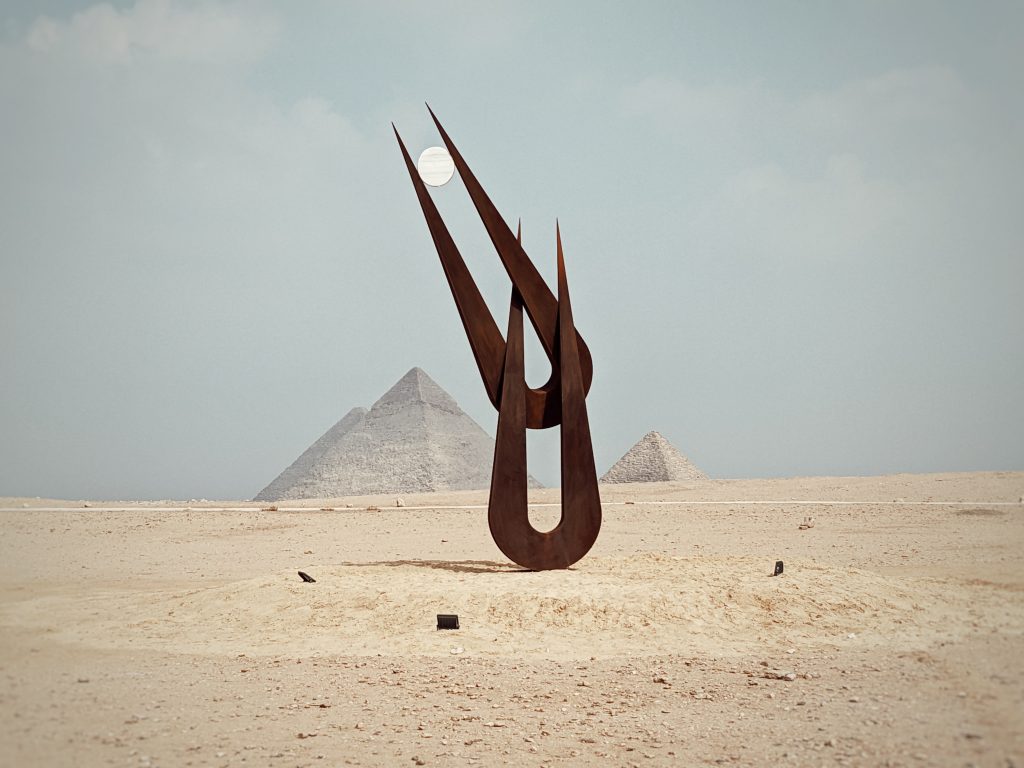
As a celebration of women, sculptor Nathalie Clark uses the goddess Hathor as representative of “all that is universally feminine—beauty, love, fertility, music, dancing, and pleasure.” The steel is on the one hand a symbol of strength and force, yet the curves of the objects and how they seemingly balance on top of each other almost effortlessly reposition this sense of strength as being intimately related to the feminine.
Camoulflage 1.618: The Unfinished Obelisk by Zeinab Alhashemi
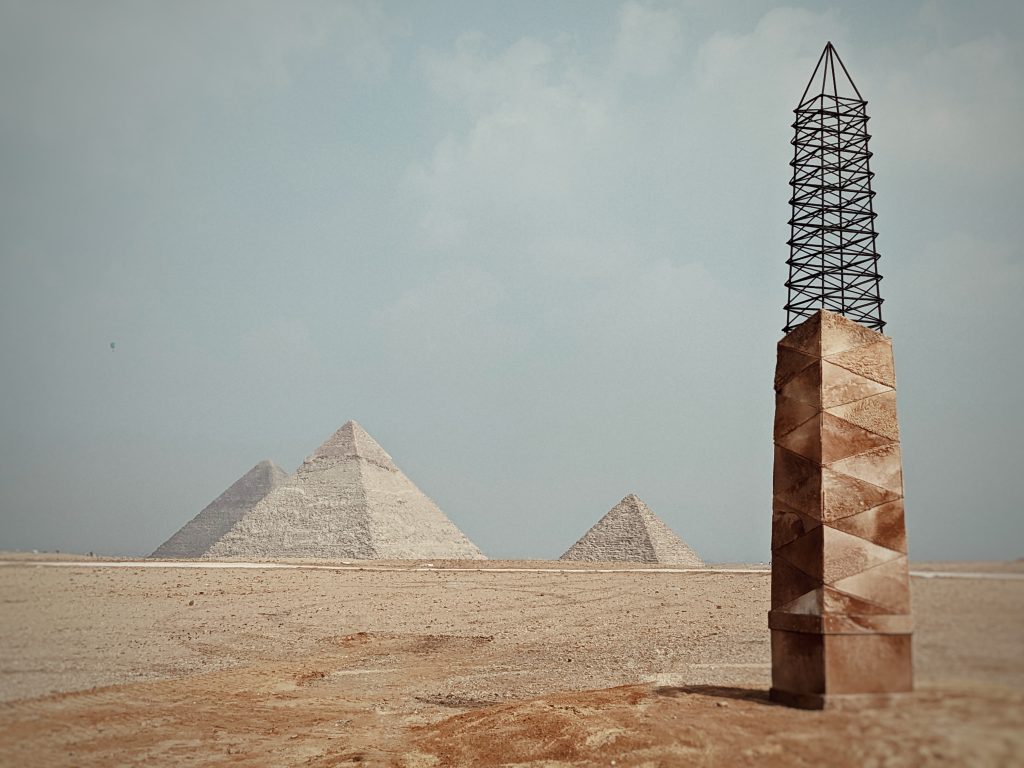
Zeinab Alhashemi is an Emirati artist whose long-standing focus on urbanization has been reimagined in relation to the Pyramids of Giza. By combining the form of the obelisk with metal reinforced rods and camel hides, Elhashemi points to the contemporary present of unfinished houses seen just outside of the Giza Plateau and also the past with Aswan’s famed unfinished obelisk.
Secrets of Time by eL Seed

The Tunisian artist eL Seed who has become famous for his distinctive style combing Arabic calligraphy and graffiti that has been coined as calligraffiti has ditched the spray can in exchange for a sculpture for Forever is Now. The installation that is entitled Secrets of Time uses the words of the Egyptian writer Radwa Ashour “time does not disclose its secrets to humankind” to reference how the past still remains a mystery in many ways.
Under the Same Sun by SpY
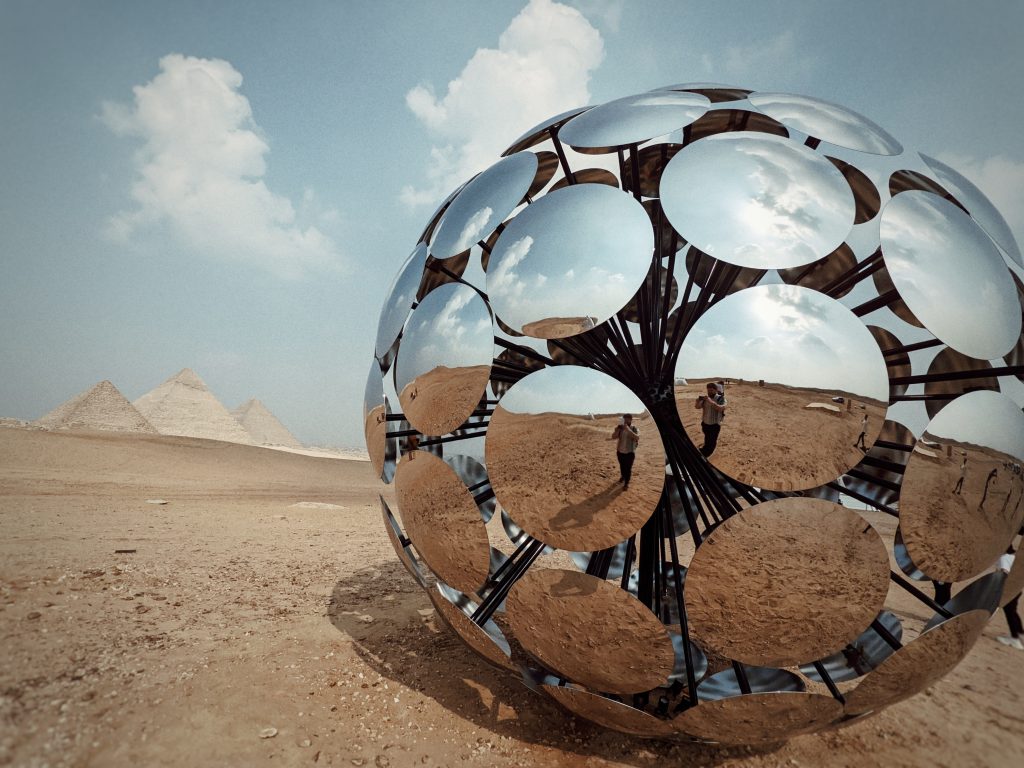
The Spanish artist SpY’s sculpture entitled Under the Same Sun references the symbolism of the sun throughout Egyptian mythology and in particular relation to the understanding of death and the afterlife in ancient Egypt. The mirrored ball also references some of the astrological and mathematical calculations alleged to have been used in the construction of the Pyramids of Giza.
Vital Sands by Jwan Yosef
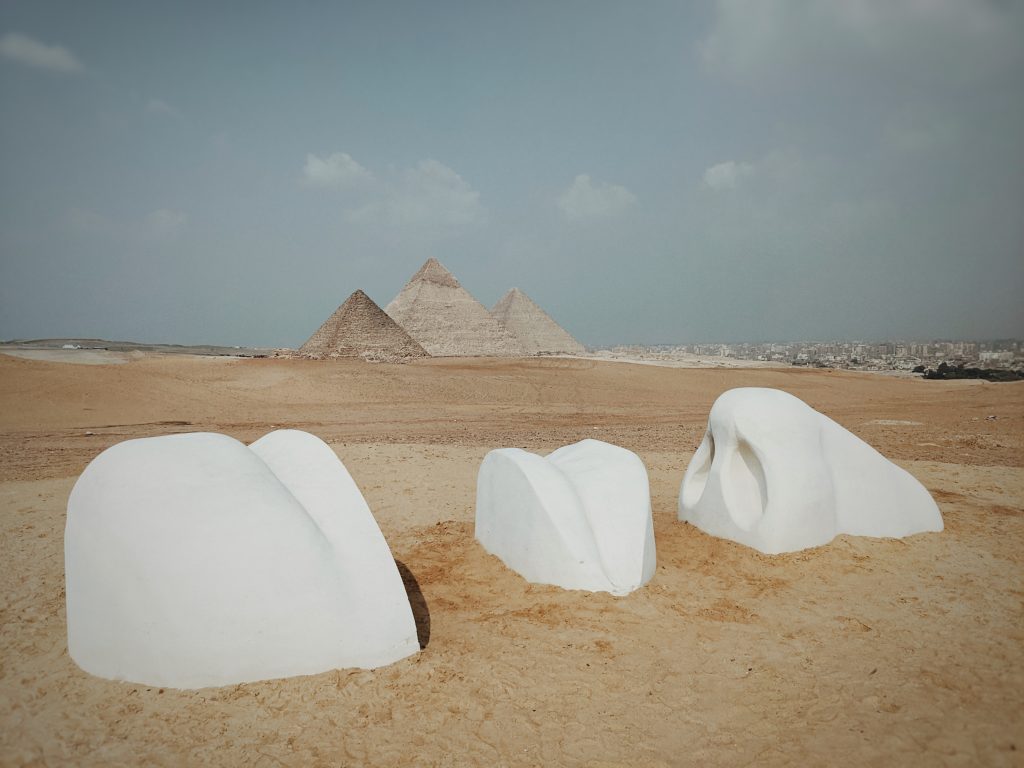
Jwan Yosef’s sculpture entitled Vital Sands welcomes viewers to interact with, sit on, and even play around it. He described his piece to me as a call to reflect on your own well-being and to care for yourself, understanding the sand as a fundamentally protective material that preserves and cushions the objects buried within.
Portal of Light by Emilio Ferro
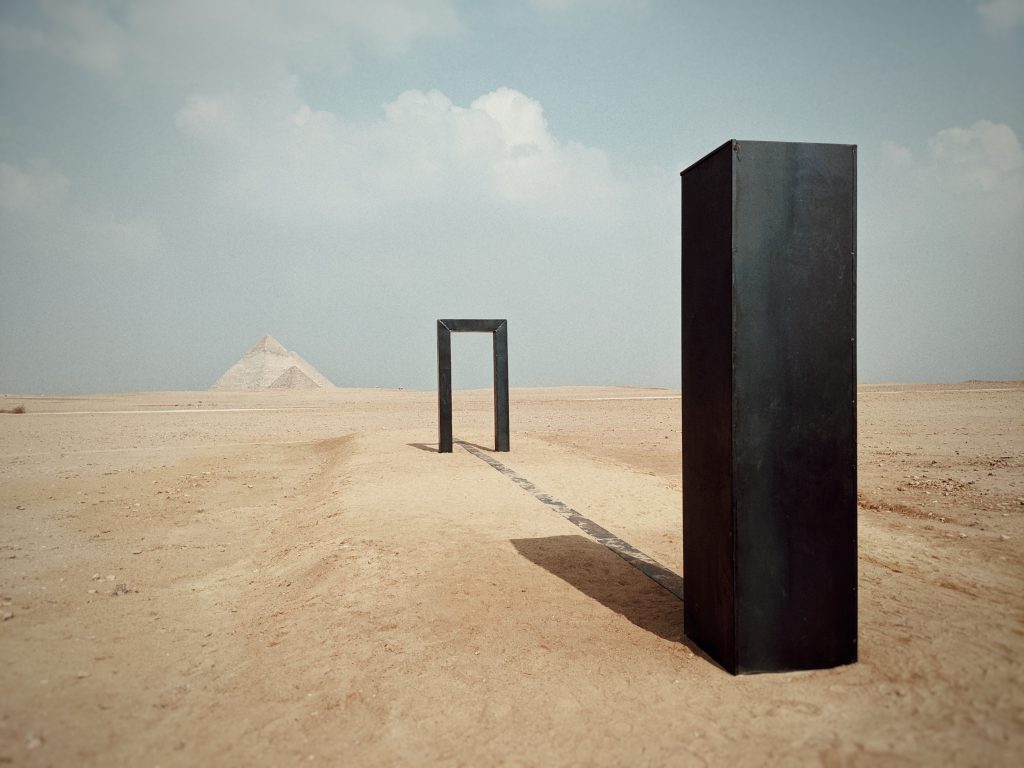
The Italian artist Emilio Ferro’s installation entitled Portal of Light discusses the relationship between life and death with heavy references to Egyptian mythology. With booming and alluring ambient noises coming out of the ground and a light that shines through the doorway appearing at night, Ferro invites you to follow the light yourself and reflect on this change of states and the journey between them.
Guardians of the Wind by Mohammad Alfarraj
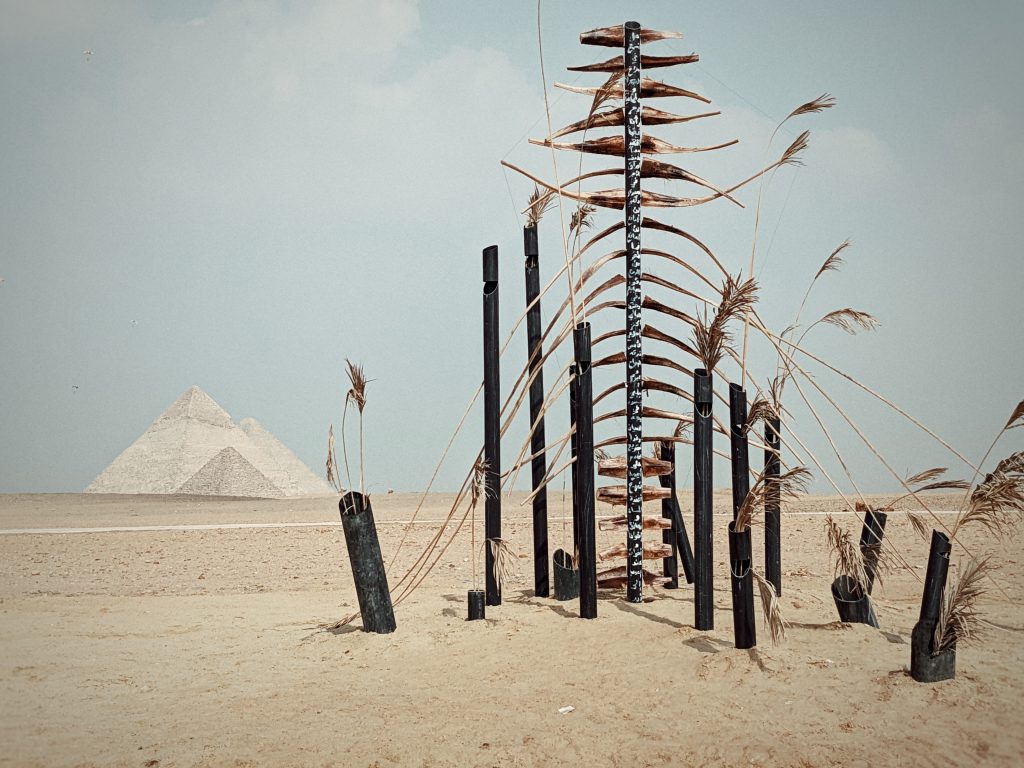
Mohammad Alfarraj is a Saudi artist with a particular interest in humankind’s impact on the natural world and the relationship between the two. His installation entitled Guardians of the Wind is a collection of agricultural pipes and dried foliage that Alfarraj gathered from the Egyptian countryside and constructed into what he describes as a “futuristic fossil.”
A Pyramid in Other Vocabularies by Ahmed Karaly
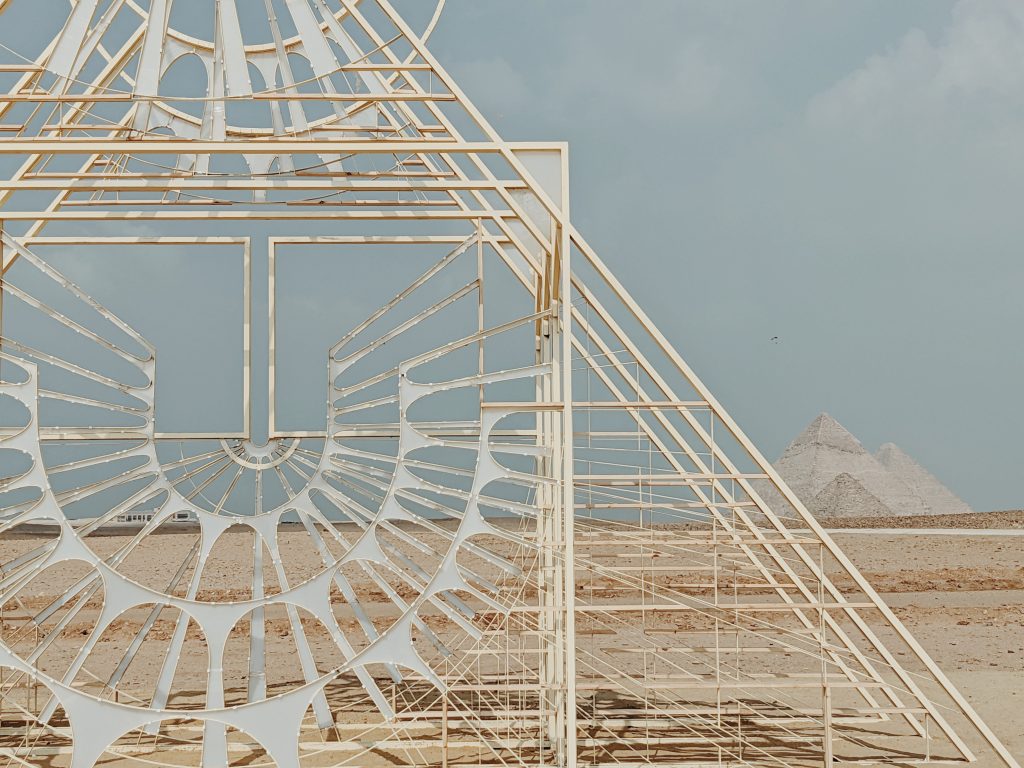
Ahmed Karaly is one of two Egyptian artists participating in this year’s installment of Forever is Now. He introduced the thought process behind his piece entitled A Pyramid in Other Vocabularies by describing how “When you are fascinated by something, you see it in everything. My fascination with the many civilizations of Egypt has made me see them as one entity, each reflecting the other. From another visual dimension, I see them completely intertwined, no matter how different their details are. This project represents the merging between the ancient Egyptian and civilizations that followed it in a contemporary rendering that interprets what I see.”


